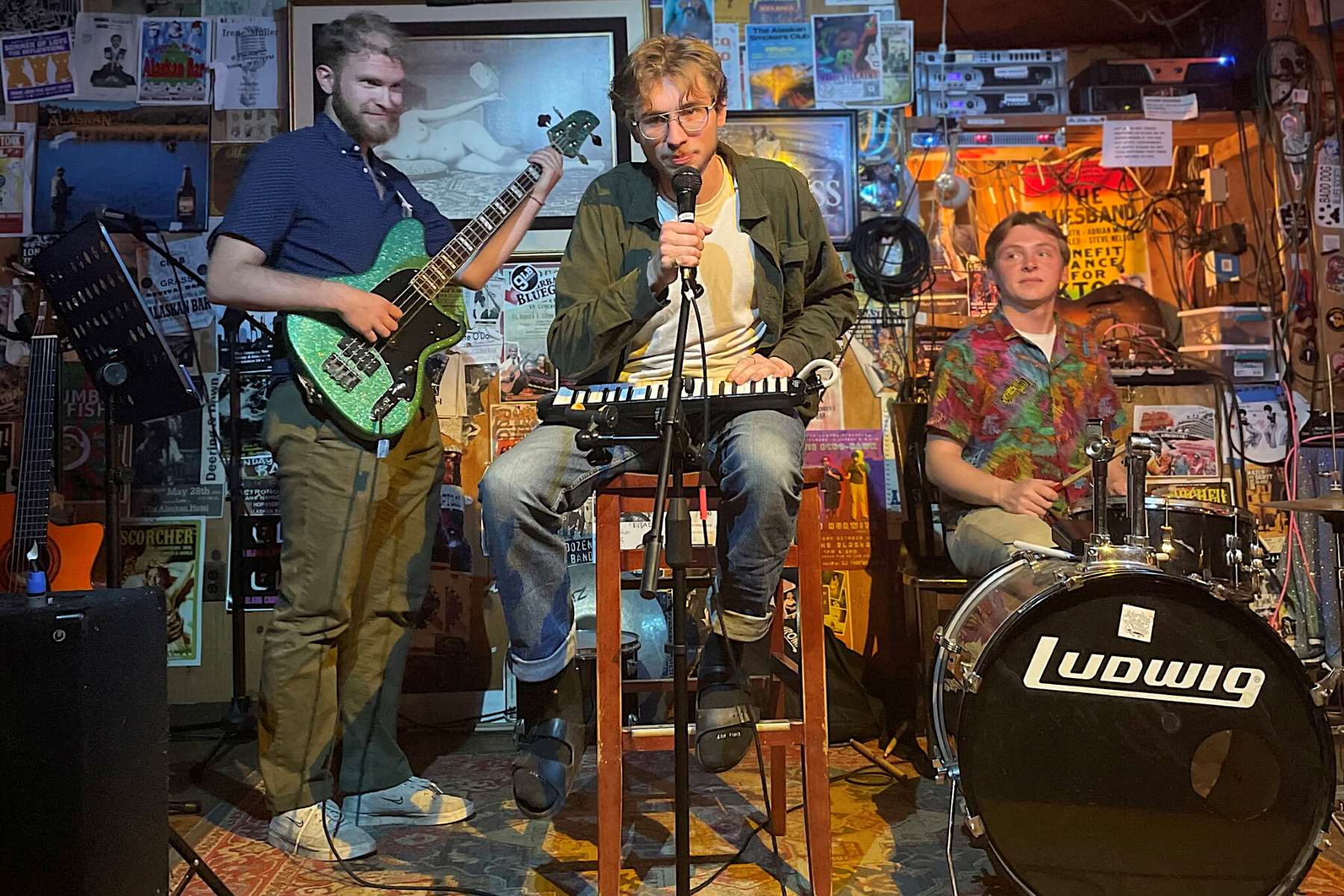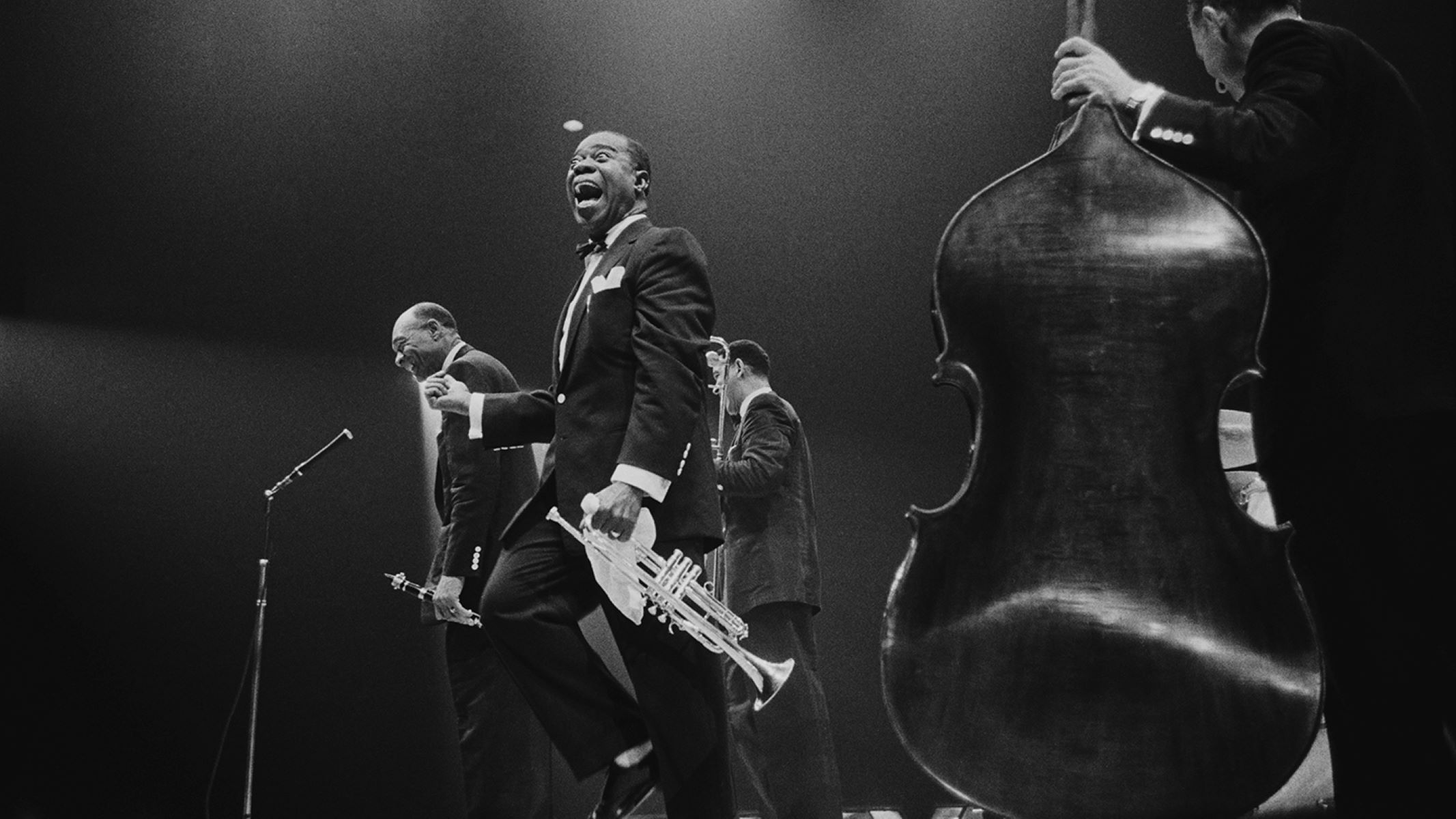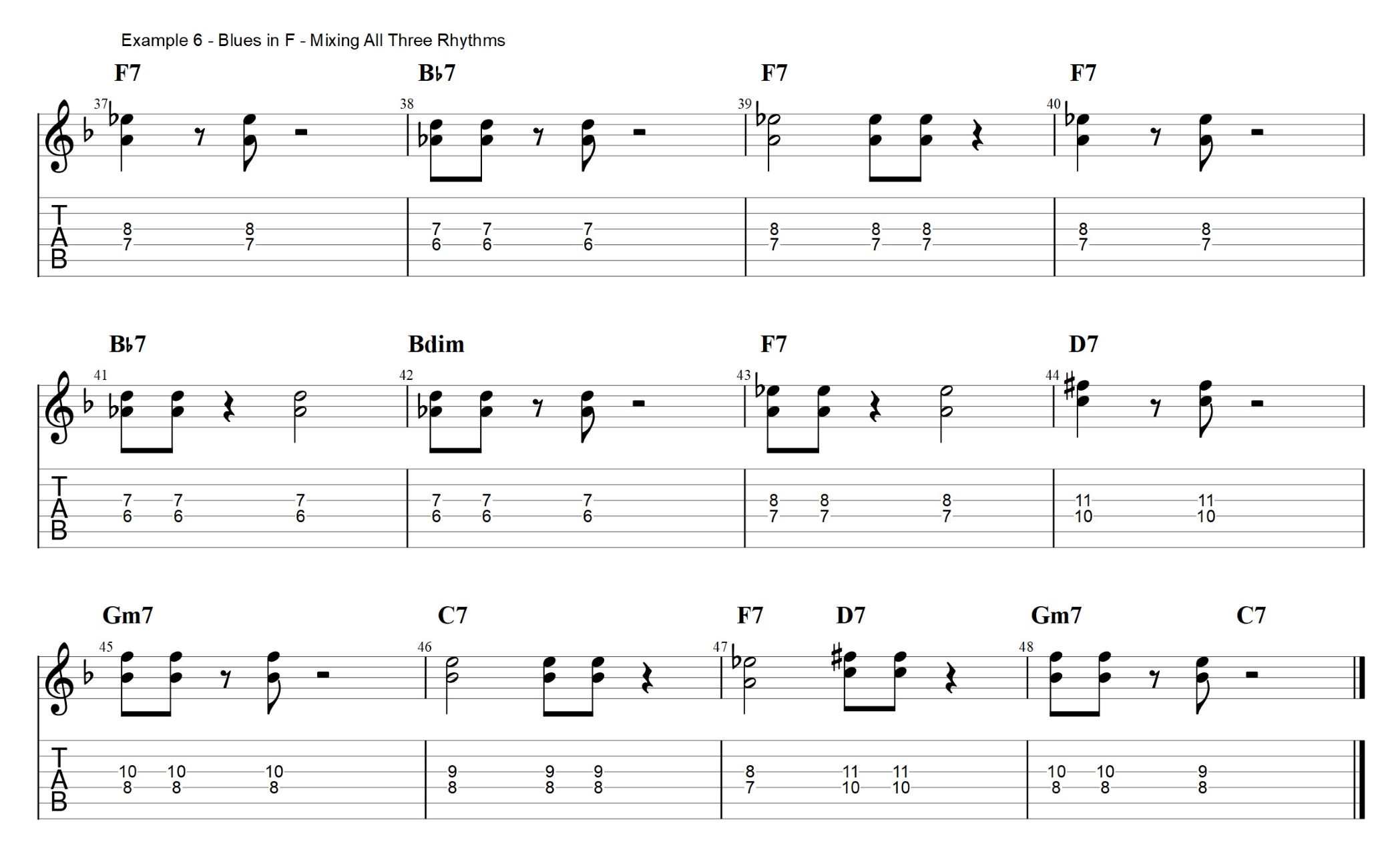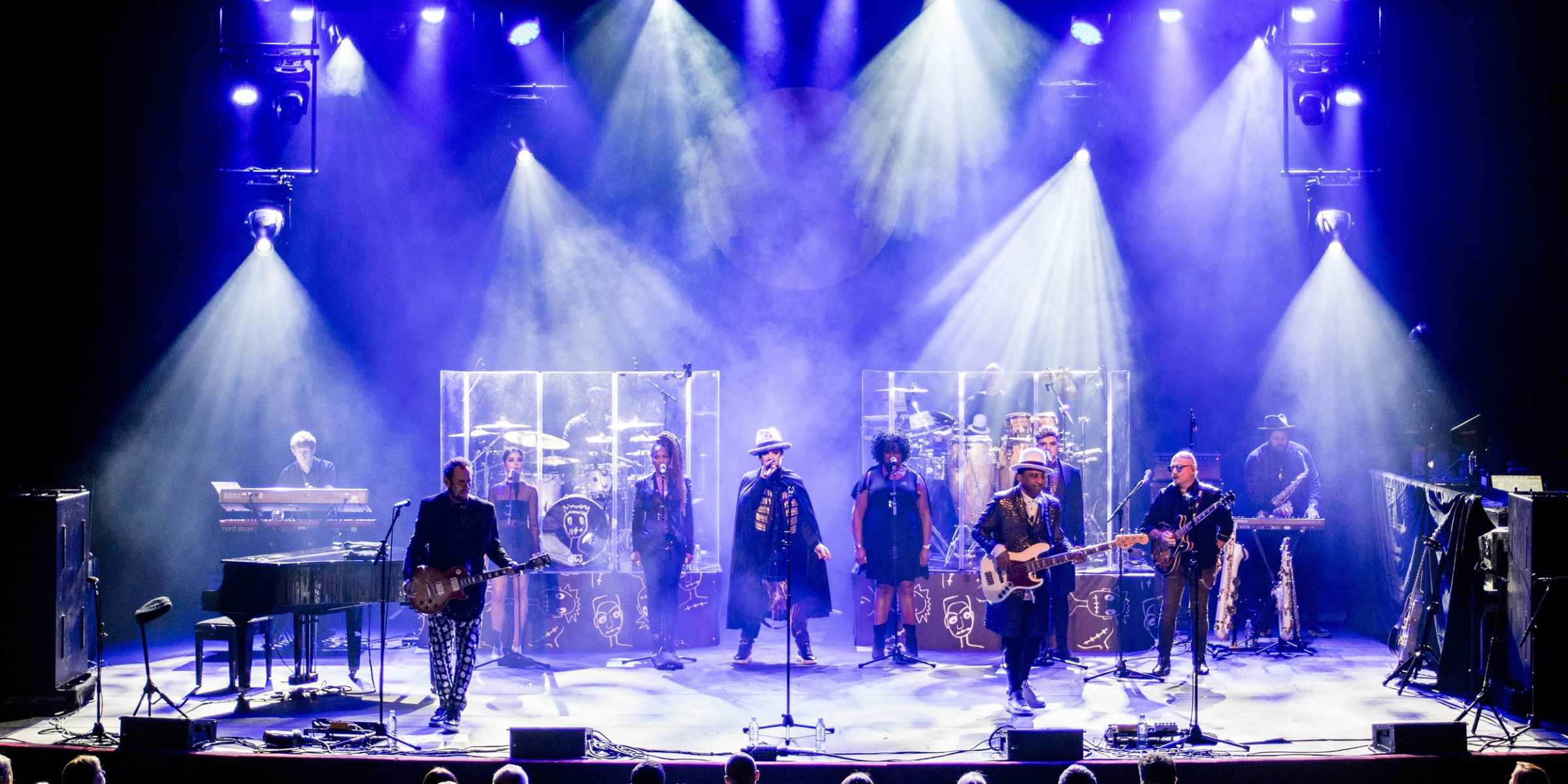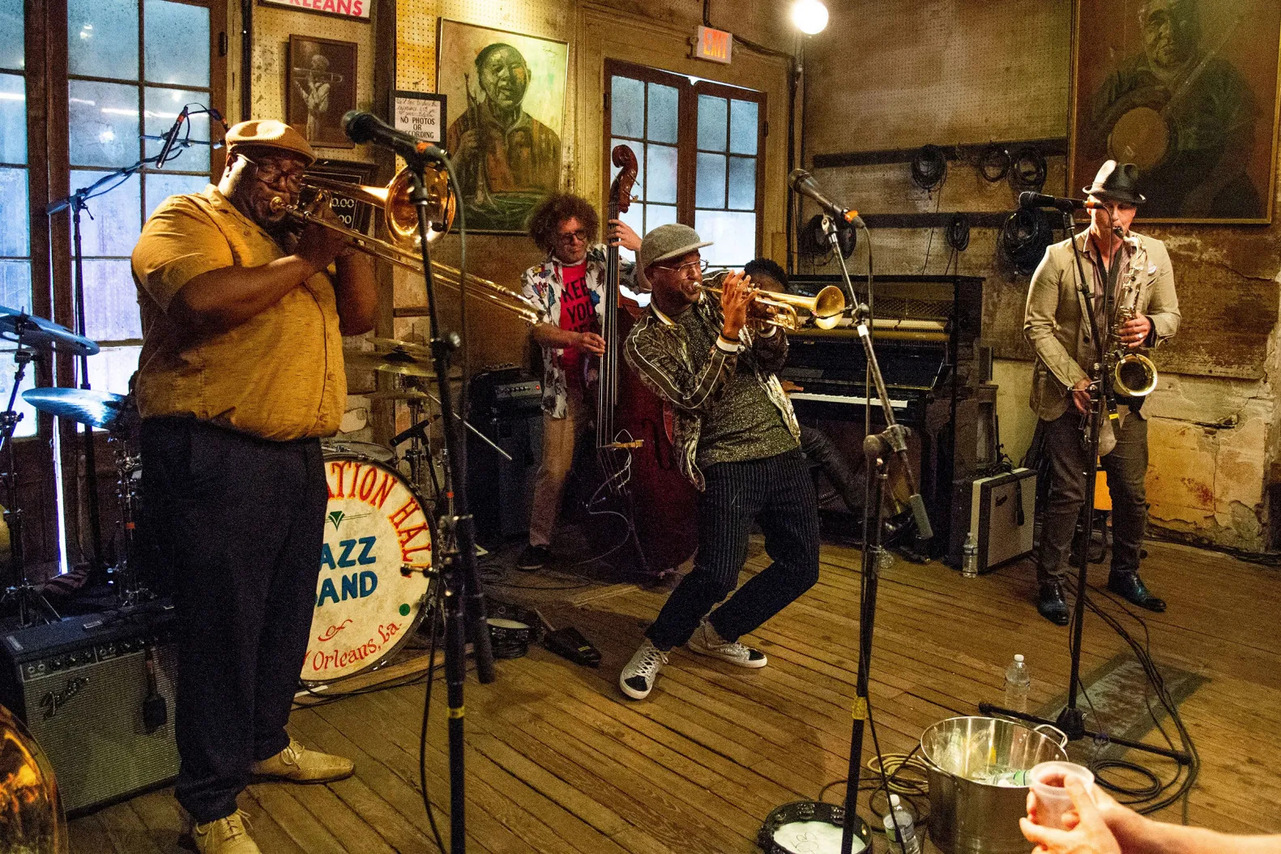

Jazz
What Is Ragtime Jazz
Modified: February 18, 2024
Discover the captivating history and unique characteristics of ragtime jazz, a genre deeply embedded in the roots of jazz. Explore the rhythmic complexities and infectious melodies that define this influential style.
(Many of the links in this article redirect to a specific reviewed product. Your purchase of these products through affiliate links helps to generate commission for AudioLover.com, at no extra cost. Learn more)
Table of Contents
Introduction
Jazz, a genre known for its improvisation, syncopation, and soulful melodies, has a rich and diverse history. One of its early predecessors, ragtime jazz, played a crucial role in shaping the development of this beloved music genre. Ragtime jazz originated in the late 19th century and was characterized by its energetic rhythms, intricate melodies, and unique syncopated style.
Rooted in African-American communities, ragtime jazz gained popularity as a form of entertainment in the early 20th century, captivating audiences with its infectious rhythms and lively piano solos. The interplay between rhythm and melody gave ragtime jazz its distinctive sound, making it a precursor to the more harmonically complex and improvisational style of later jazz subgenres.
Origins of Ragtime Jazz
The origins of ragtime jazz can be traced back to the African-American communities in the Southern United States, particularly in the late 19th century. It was heavily influenced by African polyrhythms, European march music, and the syncopated rhythms of Caribbean music. The name “ragtime” comes from the characteristic syncopation or “ragged” rhythms that defined the genre. This unique rhythmic style, combined with its melodic complexity, set ragtime jazz apart from other musical genres of the time.
Characteristics of Ragtime Jazz
Ragtime jazz is characterized by its syncopated rhythms, where the emphasis falls on off-beats or weak beats in a measure. This syncopation creates a distinctive bouncing or “ragged” feel to the music. The melodies in ragtime jazz often feature quick scalar runs, intricate embellishments, and playful variations. The piano became the primary instrument for performing ragtime, with its ability to produce both the syncopated rhythm and the complex melody.
Key Musicians in Ragtime Jazz
Scott Joplin is one of the most renowned figures in the history of ragtime jazz. Known as the “King of Ragtime,” Joplin composed numerous ragtime classics, including his famous “Maple Leaf Rag.” Other notable ragtime jazz musicians include James Scott, Jelly Roll Morton, and Eubie Blake. These musicians played a significant role in popularizing and refining the genre, paving the way for its influence on future jazz styles.
Origins of Ragtime Jazz
The origins of ragtime jazz can be traced back to the African-American communities in the Southern United States, particularly in the late 19th century. It was a vibrant musical genre that emerged as a cultural expression of African-American communities during a time of significant social and historical change.
Ragtime jazz was an amalgamation of various musical influences. It was heavily influenced by the rhythmic traditions of African music, with its emphasis on polyrhythms and syncopation. Additionally, elements of European march music and Caribbean rhythms also played a role in shaping the unique sound of ragtime jazz.
The term “ragtime” itself refers to the syncopation or “ragged” rhythms that defined the genre. Syncopation refers to deliberately placing unexpected accents or rhythmic patterns on weak beats or off-beats. This created a distinctive bouncing or syncopated feel to the music, setting it apart from other musical styles of the time.
The African-American communities where ragtime jazz originated were rich in musical traditions. These communities played a crucial role in the development and evolution of ragtime jazz. Musicians would often gather in informal gatherings, playing music together and exchanging ideas. It was through these communal experiences that ragtime jazz began to take shape and gain popularity.
Piano playing played a significant role in the development of ragtime jazz. The piano became the primary instrument for performing ragtime due to its ability to produce both the syncopated rhythms and the complex melodies that defined the genre. Pianists would often add their improvisational flourishes and embellishments, showcasing their virtuosity on the instrument and adding their unique touch to the music.
Some notable early ragtime composers include Scott Joplin, James Scott, and Jelly Roll Morton. Scott Joplin, known as the “King of Ragtime,” composed numerous ragtime classics, including his most famous piece, “Maple Leaf Rag.” His compositions showcased not only the infectious rhythms but also the melodic complexity that became the hallmark of ragtime jazz.
As ragtime jazz gained popularity, it spread beyond the African-American communities and found its way into mainstream American society. It became a popular form of entertainment in the early 20th century, with ragtime musicians performing in dance halls, saloons, and even on vaudeville stages.
The origin of ragtime jazz is a testament to the creativity and resilience of African-American musicians in the face of adversity. Through their innovative musical expressions, they laid the foundation for the development of jazz as we know it today.
Characteristics of Ragtime Jazz
Ragtime jazz is characterized by a unique blend of rhythm and melody, creating a distinct and vibrant musical experience. Its syncopated rhythms and intricate melodies set it apart from other musical genres. Here are some key characteristics of ragtime jazz:
1. Syncopation: Syncopation is a defining feature of ragtime jazz. It refers to the deliberate emphasis on off-beats or weak beats in a measure. This creates a playful, bouncing feel that distinguishes ragtime jazz from more straightforward musical styles.
2. Energetic Rhythms: Ragtime jazz is known for its energetic rhythms. The syncopated patterns and lively beats drive the music forward, creating a sense of infectious energy. The use of different rhythmic accents and patterns adds complexity and dynamism to the music.
3. Intricate Melodies: Ragtime jazz melodies are often characterized by their complexity and intricate nature. Pianists, in particular, would perform complex and virtuosic melodic runs, utilizing the full range of the instrument. These melodies can be playful, jaunty, and filled with elaborate embellishments.
4. Piano as the Primary Instrument: The piano played a significant role in the performance of ragtime jazz. Pianists would often showcase their dexterity and improvisational skills, adding their unique interpretations to the music. The piano’s ability to produce both syncopated rhythms and complex melodies made it the perfect instrument to bring ragtime jazz to life.
5. Call and Response: Call and response is a common improvisational technique in ragtime jazz. Musicians would take turns playing a musical phrase, with each subsequent phrase building upon the previous one. This back-and-forth interaction between musicians adds a dynamic and interactive element to the music.
6. Vaudeville Influences: Ragtime jazz was closely tied to vaudeville, a popular form of entertainment during the early 20th century. Musicians would often perform in vaudeville shows, incorporating elements of comedy, dance, and other theatrical elements into their performances. This combination of music and entertainment added to the lively and engaging nature of ragtime jazz.
7. Influences on Dance: Ragtime jazz had a significant impact on dance forms of the time. Its lively rhythms and infectious energy provided the perfect accompaniment for dances like the Charleston and the Cakewalk. The syncopated rhythms of ragtime jazz inspired new dance steps and became an integral part of the dance culture of the era.
Ragtime jazz laid the foundation for future jazz styles by introducing elements such as syncopation, improvisation, and intricate melodies. Its influence can still be heard in contemporary jazz music, showcasing the enduring legacy of this genre.
Whether listened to on a scratchy vinyl record or performed live, ragtime jazz continues to captivate audiences with its infectious rhythms and playful melodies. It stands as a testament to the creativity and innovation of the musicians who shaped the early foundations of jazz.
Key Musicians in Ragtime Jazz
Ragtime jazz was brought to life by a talented group of musicians who became pioneers of the genre. These influential artists not only shaped the style but also left a lasting impact on the development of jazz as a whole. Here are some key musicians in ragtime jazz:
1. Scott Joplin: Known as the “King of Ragtime,” Scott Joplin is one of the most notable figures in the history of ragtime jazz. His compositions, such as the iconic “Maple Leaf Rag” and “The Entertainer,” are timeless classics that epitomize the ragtime style. Joplin’s music showcased the syncopated rhythms and intricate melodies that became synonymous with ragtime.
2. James Scott: James Scott was a prominent ragtime composer and pianist, often referred to as the “Stride King.” His compositions, including “Frog Legs Rag” and “Grace and Beauty,” demonstrated his exceptional skill and creativity. Scott’s distinctive approach to syncopation and his innovative harmonies set him apart as a leading figure in ragtime jazz.
3. Jelly Roll Morton: A true innovator of early jazz, Jelly Roll Morton was not only a pianist but also a bandleader and composer. While he had influences from ragtime, Morton’s music incorporated elements of blues and early jazz. His recordings, such as “Black Bottom Stomp” and “Jelly Roll Blues,” showcase his mastery of syncopated rhythms and his unique interpretation of the ragtime style.
4. Eubie Blake: Eubie Blake was a prolific ragtime composer and pianist known for his vibrant and energetic style. His compositions, including “Charleston Rag” and “Memories of You,” captured the spirit of ragtime jazz and became staples of the genre. Blake was also known for his theatrical performances, bringing a sense of showmanship to his music.
5. Joseph Lamb: Joseph Lamb was a contemporary of Scott Joplin and James Scott, and his compositions were an essential contribution to the ragtime genre. His works, such as “Ragtime Nightingale” and “American Beauty,” showcased his mastery of syncopation and intricate melodic lines. Lamb’s compositions often had a nostalgic and sentimental quality, adding depth and emotion to the ragtime sound.
These musicians, among others, played a vital role in popularizing and refining the ragtime jazz style. Their contributions ensured that ragtime jazz would have a lasting impact on the future development of jazz music.
Their influence extended beyond the ragtime era, laying the groundwork for the swing era of the 1930s and the subsequent evolution of jazz. The syncopated rhythms and virtuosic piano playing of these ragtime jazz musicians continue to inspire and influence jazz musicians to this day.
Ragtime jazz continues to be celebrated and performed, with contemporary musicians paying homage to these early pioneers. The enduring legacy of these key musicians solidifies their place as influential figures in the history of jazz, and their contributions remain an important part of the genre’s rich heritage.
Influence of Ragtime Jazz on Other Music Genres
Ragtime jazz, with its distinctive syncopated rhythms and infectious melodies, had a significant impact on the development of various music genres. The influence of ragtime jazz can be heard in the evolution of jazz itself, as well as in other genres that emerged in the early 20th century. Here are some music genres that were influenced by ragtime jazz:
1. Jazz: Ragtime jazz was a precursor to the development of jazz as we know it today. It introduced the concept of syncopation and improvisation, elements that became fundamental to jazz music. Many early jazz musicians, including Louis Armstrong and Duke Ellington, incorporated ragtime elements into their music, helping to shape the evolving sound of jazz.
2. Swing: The swinging rhythms and lively energy of ragtime jazz provided a foundation for the development of swing music in the 1930s and 1940s. Swing bands, such as those led by Count Basie and Benny Goodman, incorporated elements of ragtime’s syncopation and lively rhythms, creating a driving and danceable sound that became the hallmark of the swing era.
3. Stride Piano: Stride piano, a style of piano playing characterized by alternating bass notes and syncopated melody lines, was influenced by ragtime jazz. Pianists such as Fats Waller and Willie “The Lion” Smith were renowned for their stride piano playing, which incorporated the virtuosic elements of ragtime while adding their unique improvisational flair.
4. Dixieland: Dixieland jazz, also known as traditional jazz, drew heavily from the ragtime tradition. The spirited improvisation, ensemble playing, and syncopated rhythms in Dixieland were influenced by ragtime’s infectious energy. Dixieland bands, including those led by Louis Armstrong and Kid Ory, incorporated ragtime elements into their performances, solidifying the connection between the two genres.
5. Musical Theater: Ragtime jazz’s popularity in the early 20th century also influenced the world of musical theater. Composers such as George Gershwin and Irving Berlin incorporated ragtime-inspired rhythms and melodies into their Broadway musicals, creating a lively and vibrant sound that resonated with audiences. The influence of ragtime can be heard in classic musicals like “Funny Face” and “Annie Get Your Gun.”
The influence of ragtime jazz extends beyond these genres. Its syncopated rhythms and infectious melodies have found their way into popular music, including early rock and roll and even contemporary music genres. The legacy of ragtime jazz can still be heard in the music of artists like Leon Redbone and Harry Connick Jr., who pay homage to the ragtime era in their own unique ways.
Ragtime jazz continues to inspire and influence musicians across generations, demonstrating its lasting impact on the world of music. Its infectious rhythms and intricate melodies have left an indelible mark on the evolution of jazz and beyond, ensuring that the spirit of ragtime jazz lives on in various musical genres.
Decline and Revival of Ragtime Jazz
After its initial surge in popularity in the early 20th century, ragtime jazz faced a decline in the 1920s. Several factors contributed to its decline, including the rise of new jazz styles, the advent of radio and recorded music, and the changing tastes of audiences. However, ragtime jazz experienced a revival in the 1970s and continues to have a dedicated following today.
One of the primary reasons for the decline of ragtime jazz was the emergence of new jazz styles such as swing and bebop. These new styles embraced more complex harmonies, improvisation, and a different rhythmic approach. The syncopated style of ragtime, which was once considered innovative, began to sound dated in the face of these new developments.
Additionally, the widespread availability of radio and recorded music provided access to a broader range of music styles and genres. Ragtime jazz, with its piano-centric sound, did not translate as well to the recorded medium compared to larger ensembles or solo performers of other jazz styles.
Furthermore, the tastes of audiences began to shift towards the emerging genres of popular music, such as swing, big band, and eventually rock and roll. Ragtime jazz’s association with a bygone era made it less appealing to mainstream audiences.
However, in the 1970s, there was a resurgence of interest in ragtime jazz. This revival was fueled by a renewed appreciation for early jazz styles and a desire to preserve and celebrate the rich history of the genre. Ragtime festivals and dedicated musicians worked diligently to revive and reintroduce ragtime jazz to new audiences.
The 1973 film “The Sting,” with its ragtime-influenced soundtrack composed by Marvin Hamlisch, played a significant role in bringing ragtime jazz back into the cultural spotlight. The film’s success sparked a renewed interest in the genre and introduced it to a new generation.
Since then, ragtime jazz has continued to enjoy a dedicated following. Ragtime festivals, workshops, and dedicated enthusiasts keep the legacy of ragtime jazz alive through performances and recordings. Musicians like Joshua Rifkin, Dick Hyman, and Marcus Roberts have further contributed to the revival and preservation of ragtime jazz through their interpretations and recordings of classic ragtime compositions.
Today, ragtime jazz remains a niche genre but continues to have a devoted and passionate fan base. Its influence can be heard in contemporary reinterpretations by artists who blend elements of ragtime with other musical styles, demonstrating the ongoing relevance and appeal of this early jazz form.
The decline and subsequent revival of ragtime jazz highlight the cyclical nature of music trends and the enduring impact of a genre that has left an indelible mark in the history of jazz and popular music as a whole. Its resurgence serves as a testament to the timeless appeal of ragtime jazz and its ability to captivate audiences across generations.
Conclusion
Ragtime jazz, with its syncopated rhythms, intricate melodies, and infectious energy, holds a significant place in the history of jazz and American music as a whole. Originating in the late 19th century, ragtime jazz served as a precursor to the development of jazz and influenced numerous music genres that followed.
Despite facing a decline in popularity in the 1920s, ragtime jazz experienced a remarkable revival in the 1970s and has continued to captivate audiences ever since. Its syncopated rhythms and lively melodies have left an indelible mark on the evolution of jazz and other genres like swing, stride piano, dixieland, and even musical theater.
Key figures such as Scott Joplin, James Scott, Jelly Roll Morton, and Eubie Blake contributed to the growth and refinement of ragtime jazz, leaving a lasting legacy that continues to inspire musicians today. Their innovative compositions and virtuosic performances showcased the dynamic and intricate nature of ragtime jazz.
The decline of ragtime jazz can be attributed to the emergence of new jazz styles, changes in music consumption, and evolving audience preferences. However, the resurgence of interest in the genre in the 1970s brought ragtime jazz back into the cultural spotlight, preserving its legacy for future generations.
Today, dedicated musicians, festivals, and enthusiasts keep the spirit of ragtime jazz alive by performing and recording classic ragtime compositions and incorporating modern interpretations of the genre. The enduring appeal of ragtime jazz lies in its ability to transport listeners to a bygone era, evoking a sense of nostalgia and joy.
The influence of ragtime jazz on jazz music and other genres is evident in the syncopated rhythms, improvisational elements, and diverse melodic structures found in contemporary music. The ragtime era serves as a testament to the creativity and innovation of its musicians, as well as its broader cultural significance in capturing the essence of a changing society.
In conclusion, ragtime jazz played a pivotal role in shaping the evolution of jazz and left an indelible mark on the broader musical landscape. Its syncopated rhythms, intricate melodies, and energetic performances continue to inspire and delight audiences, ensuring that the legacy of ragtime jazz lives on as an essential part of American music history.

